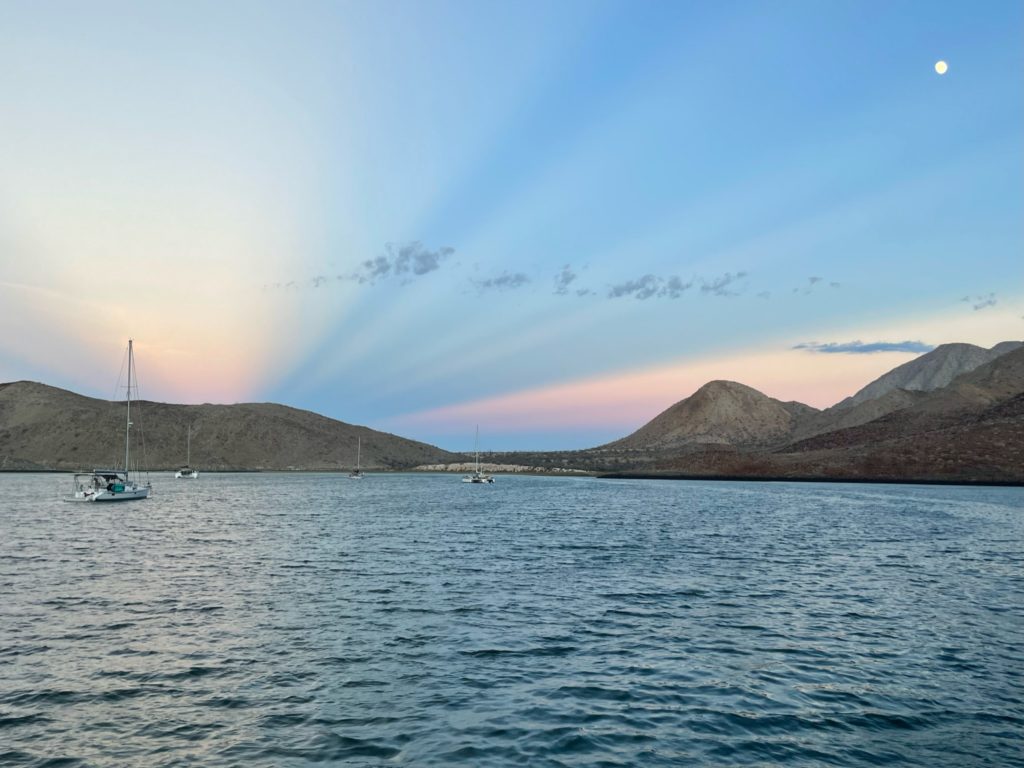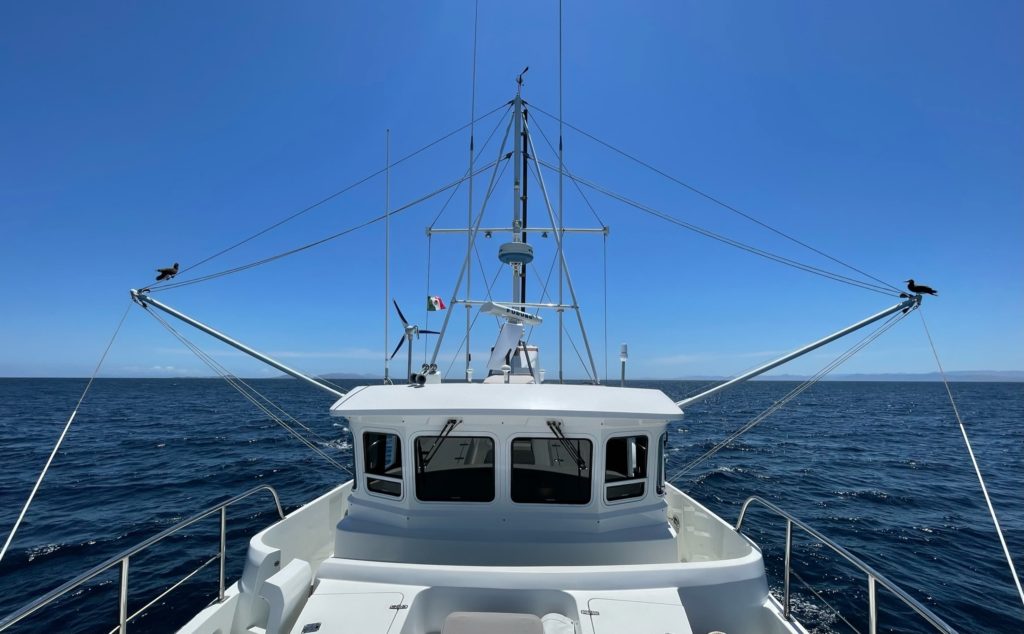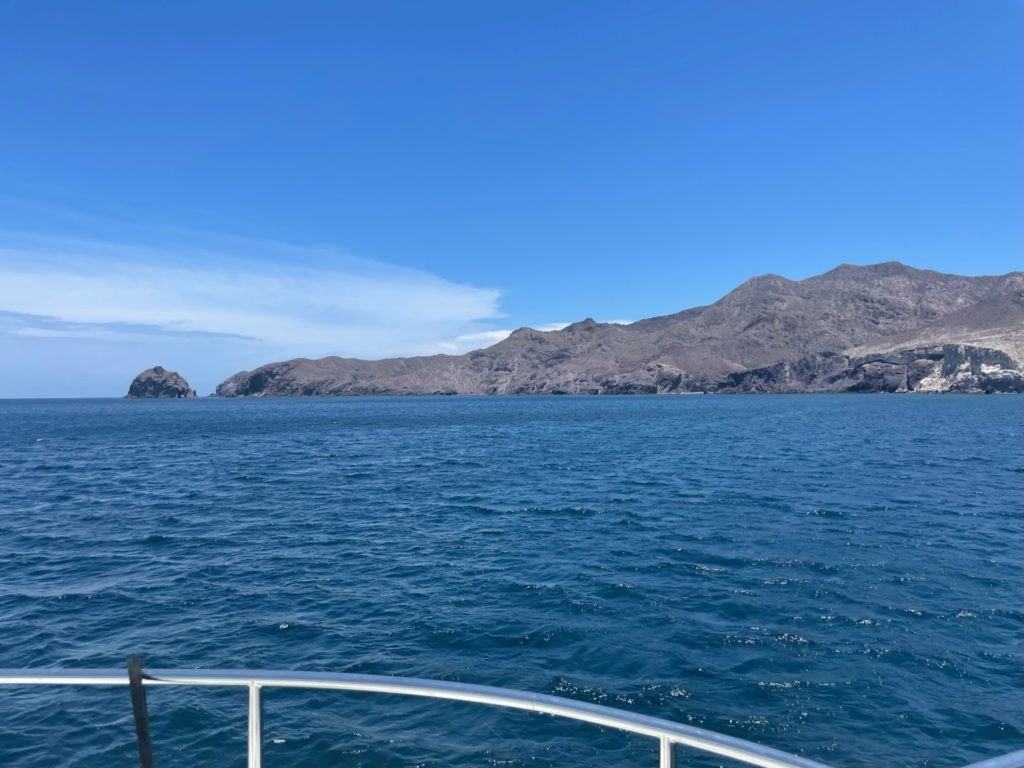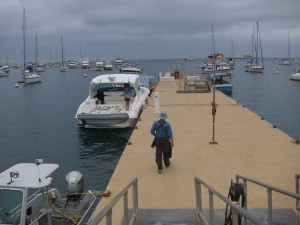Here is the sunrise on Tuesday, September 6. Look at how bright the moon is despite the early morning sun.

Not long after that photo was taken, the wind picked up. We had 17-knot sustained winds with gusts to 25-knots for pretty much the entire day. Since the wind was coming from the same direction as the hurricane would be coming from, this was actually a blessing. It meant all the boats were pushed into the place that they will be during the storm, allowing each of us to more accurately judge if we are far enough away from other boats/hazards to be safe on Thursday. One boat left, deciding they’d rather ride the storm out in the Bay of LA than Don Juan. A few boats repositioned themselves into different spots here in Don Juan.
Continue reading




